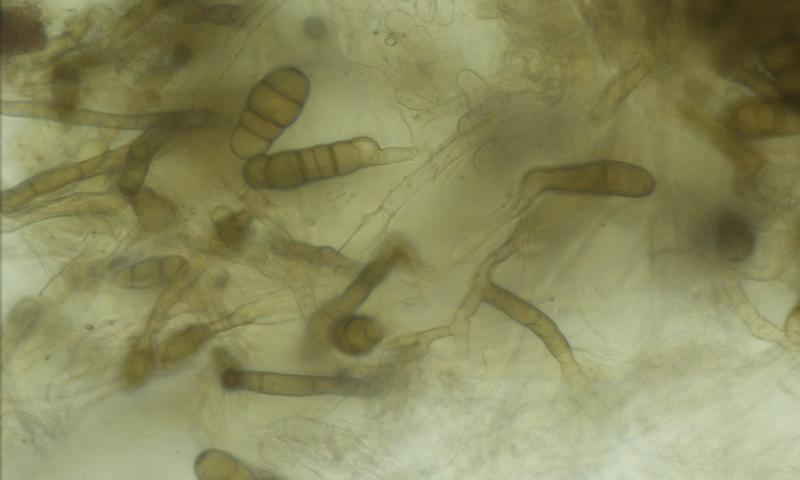
Earlier this fall, a garlic sample was submitted to the SDSU Plant Diagnostic Clinic that was mushy, discolored, and had the odor of root beer (Figure 1). The variety of garlic was ‘Chesnok Red’ and was collected from central South Dakota. Upon completing diagnostics of the garlic sample, it was discovered that the garlic had a disease called Embellisia skin blotch.
Symptoms
The typical symptoms of this disease are observed to be irregular, dark areas on the outer scales of the garlic bulb. Advanced stages of this disease can lead to garlic becoming soft or mushy due to cankers forming on the clove. The advanced disease is also what likely produced the off smell that was reported with our diagnostic sample.
Pathogen

This disease is a fungal disease caused by the pathogen Embellisia allii (Figure 2). This fungus is widely distributed across the United States, but it is typically more problematic in parts of the Northeast and other areas where summer moisture occurs. The pathogen overwinters in plant debris, soil, and diseased cloves, enabling it to start infection again each year if the disease is not managed.
Management
This disease is typically considered to be a cosmetic problem and can be easily managed if identified. The primary method of management is the removal of diseased garlic scales or discarding garlic bulbs that are heavily symptomatic. While high moisture near harvest can encourage disease growth, the disease can also begin if garlic is not dried well before storage. If this disease is observed on garlic, ensure that humidity is managed in storage (less than 70%) and that garlic bulbs are stored in breathable material.
References
- Johnson, Steven. 2011. Embellisia Skin Blotch on Garlic. The University of Maine Cooperative Extension, Bulletin #1204.
- Putnam, Melodie. 2013. Embellisia Skin Blotch. Oregon State University Extension.


